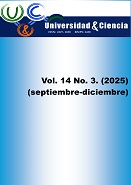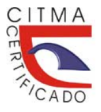Parasitic vaccines and wool quality in sheep from the province of Cotopaxi, Ecuador
DOI:
https://doi.org/10.5281/zenodo.17219578Keywords:
fleece, gastrointestinal parasites, parasitic antigens, sheep farmingAbstract
Introduction: Gastrointestinal parasitosis is a significant problem in sheep farming, making control strategies vital to minimize its impact and the growing resistance to antiparasitic drugs. Objective: To evaluate parasitic vaccines for Haemonchus spp.; Strongylus spp.; Cooperia spp., in sheep from the Cotopaxi Province, Ecuador, as a tool to improve local wool production. Method: This research was conducted in the Cotopaxi Province, Ecuador. A total of 160 sheep aged between 6 months and 7 years were analyzed. Parasitic species (Haemonchus spp.; Strongylus spp.; Cooperia spp.) were identified by coprological analysis. Vaccines (parasitic antigens) based on adult parasites were prepared and administered. The evaluation of wool quality and its relationship with the vaccines administered considered the physical indicators Mean Fiber Diameter, Staple Length, Fleece Crimp, and Breaking Point. Results: The results revealed statistically significant improvements in fineness, length, crimp, density, and strength, particularly for the Haemonchus vaccine, reflecting a significant advance in wool productivity and quality. The result was less significant for those inoculated with Cooperia, and the response to Strongylus was less effective. Conclusion: Parasitic vaccines are an important tool for health control, the prevention of these parasitic diseases, and the improvement of bioproductive indicators. The improvement in wool physical parameters was evident with the Haemonchus spp. vaccine, highlighting its potential to support more sustainable sheep farming practices.
Downloads
References
Albers, G. A. A., Gray, G. D., Le Jambre, L. F., Barger, I. A. y Barker, J. S. F. (1990). The effect of Haemonchus contortus infection on haematological parameters in young Merino sheep and its significance for productivity. Animal Science, 50(1), 99-109. https://doi.org/10.1017/S0003356100004505
Arsenopoulos, K. V., Fthenakis, G. C., Katsarou, E. I. y Papadopoulos, E. (2021). Haemonchosis: A challenging parasitic infection of sheep and goats. Animals, 11(2), 363. https://doi.org/10.3390/ani11020363
Bah, M. y Keita, S. (2022). Prevalence of Gastrointestinal Parasites in Small Ruminants in Jarra East District, the Gambia. Middle East Journal of Agriculture Research, 11(02), 511-518. http://dx.doi.org/10.36632/mejar/2022.11.2.30
Barger, W. y Southcott. T. (1975). Trichostrongy-losis and wool growth. Australian J. Exp. Agr. and Animal Husb., 15, 169-180.
Barton, N. J. y Brimblecombe, C. J. (1983). Efectos del tratamiento antihelmíntico y la estación del año en la cantidad y calidad de la lana de ovejas merinas. Aust J Agric Res., 34(5), 557-68.
Barton, N. J. y McCausland, I. P. (1987). Producción y rentabilidad económica de ovejas merinas destetadas sometidas a cuatro frecuencias de administración de antihelmínticos en East Gippsland, Victoria. Aust J Exp Agric. 27(6), 759-64.
Bassetto, C. C., Albuquerque, A. C. A., Lins, J. G. G., Marinho-Silva, N. M., Chocobar, M. L., Bello, H. J., ... y Chagas, A. C. S. (2024). Revisiting anthelmintic resistance in sheep flocks from São Paulo State, Brazil. International Journal for Parasitology: Drugs and Drug Resistance, 24, 100527. https://doi.org/10.1016/j.ijpddr.2024.100527
Besier, R. B., Kahn, L. P., Sargison, N. D. y Van Wyk, J. A. (2022). The path towards sustainable control of gastrointestinal nematodes in ruminant livestock. International Journal for Parasitology, 52(7), 467-483. https://doi.org/10.1016/j.ijpara.2022.02.006
Charlier, J., Rinaldi, L., Musella, V., Ploeger, H. W., Chartier, C., Vineer, H. R. ... y Claerebout, E. (2020). Initial assessment of the economic burden of major parasitic helminth infections to the ruminant livestock industry in Europe. Preventive veterinary medicine, 182, 105103. https://doi.org/10.1016/j.prevetmed.2020.105103
Charlier, J., van der Voort, M., Kenyon, F., Skuce, P. y Vercruysse, J. (2014). Chasing helminths and their economic impact on farmed ruminants. Trends in parasitology, 30(7), 361-367. https://doi.org/10.1016/j.pt.2014.04.009
Claerebout, E. y Geldhof, P. (2020). Helminth vaccines in ruminants: from development to application. Veterinary Clinics: Food Animal Practice, 36(1), 159-171. https://doi.org/10.1016/j.cvfa.2019.11.005
Dobson, R. J. y Kemp, D. R. (2021). Impact of gastrointestinal parasites on wool quality and production in sheep. Animal Production Science, 61(3), 480-488. https://doi.org/10.1071/AN20123
Greer, A. W., Smith, K. J. y Evans, C. J. (2023). Statistical methods in wool quality evaluation: Assessing treatment effects in ovine studies. Journal of Animal Science and Technology, 65(2), 110-118. https://doi.org/10.5187/JAST.2023.65.2.110
Huang Y. (2021). Preliminary Research on the Function and Molecular Mechanism of Hc-nas-33 Involved in the Molting Process of Haemonchus contortus. Zhejiang University. (in Chinese)
Jafari, S. (2015). Genetic selection for wool quality. CABI Reviews, (2015), 1-7. https://doi.org/10.1079/PAVSNNR201510017
Kassai, T. (2019). Veterinary Helminthology Butterworth-Heinemann. Londres - Inglaterra: Oxford.
Kebeta, M. M., Hine, B. C., Walkden-Brown, S. W., Kahn, L. P. y Doyle, E. K. (2021). Protective efficacy of Barbervax® in Merino weaner sheep trickle infected with five doses of Haemonchus contortus infective larvae. Veterinary Parasitology, 292, 109386. https://doi.org/10.1016/j.vetpar.2021.109386
Kemp, D. R., Walker, S. L. y O’Neill, B. (2019). Application of the OFDA 2000 in sheep wool fiber analysis: Protocols and accuracy. Small Ruminant Research, 176, 120-130. https://doi.org/10.1016/j.smallrumres.2019.05.009
Maass, D. R., Harrison, G. B. L., Shoemaker, C. B. y Hein, W. R. (2024). Advances in vaccines against gastrointestinal nematodes in ruminants. Frontiers in Immunology, 15, 1365957. https://doi.org/10.3389/fimmu.2024.1365957
Matebesi Ranthimo, P. A. M., Van Wyk, J. B., Cloete, S. W. P. y Olivier, J. J. (2014). Genetic parameters and relationships of faecal worm egg count with objectively measured wool traits in the Tygerhoek Merino flock. South African Journal of Animal Science, 44(2), 178-188. https://hdl.handle.net/10520/EJC155335
Meeusen, E. N., Walker, J., Peters, A., Pastoret, P. P. y Jungersen, G. (2007). Current status of veterinary vaccines. Clinical microbiology reviews, 20(3), 489-510. https://doi.org/10.1128/cmr.00005-07
Pinto, N. B., Gaspar, E. B., Minho, A. P. (2022). Supplementation with Saccharomyces boulardii reduces Haemonchus contortus infection in sheep. Veterinary Parasitology, 306, 109669. https://doi.org/10.1016/j.vetpar.2022.109669
Steffan, P., Fiel, C. y Ferreyra, D. (2018). Cestodosis de los ovinos y bovinos. Sitio Argentino de Producción Animal.
Thorne, J. W., Bowdridge, S. A., Murdoch, B. M. y Redden, R. R. (2022). Response of Rambouillet Lambs to an Artificial Gastrointestinal Nematode Infection. Animals, 12(9), 1199. https://doi.org/10.3390/ani12091199
Versteeg, L., Almutairi, M. M., Hotez, P. J. y Pollet, J. (2019). Enlisting the mRNA vaccine platform to combat parasitic infections. Vaccines, 7(4), 122. https://doi.org/10.3390/vaccines7040122
Windon, R. G., Rudd, P. A. y Pike, J. M. (2020). Measurement of wool fiber tensile strength using dynamometers: a review. Wool Technology and Sheep Breeding, 68(1), 30-40. https://doi.org/10.1080/00400940.2020.1716380
Zhang, Y., Wu, W., Bai, Z., Zhang, H., Liu, H., Zhang, L. ... y Liu, C. (2024). Investigation on parasite infection and anthelmintic resistance of gastrointestinal nematodes in sheep in Hinggan league (City), China. BMC Veterinary Research, 20(1), 564. https://doi.org/10.1186/s12917-024-04420-1
Downloads
Published
How to Cite
Issue
Section
License
Copyright (c) 2025 Universidad & ciencia

This work is licensed under a Creative Commons Attribution-NonCommercial-ShareAlike 4.0 International License.





















